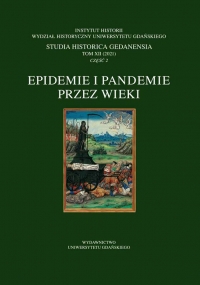Epidemie i pandemie w wybranych polskich
podręcznikach szkolnych historii dla szkół średnich
po 1989 r.
Epidemics and pandemics in selected Polish school history textbooks for secondary schools after 1989
Author(s): Michał KosznickiSubject(s): Social Sciences, Education, School education, Sociology of Education
Published by: Wydawnictwo Uniwersytetu Jagiellońskiego
Keywords: epidemics; history; school textbooks
Summary/Abstract: The paper presents an analysis of the presentation of major epidemics (pandemics) in the history of mankind in Polish history textbooks for secondary schools published between 1989 and 2020. A qualitative study was carried out on a sample of forty-four textbooks and concerned issues such as: epidemics in antiquity, the so-called “Black Death’ from 1346 to 1353, epidemics in the New World during the period known as the Age of Discovery, and the Spanish flu (the Great Influenza Epidemic) of 1918–1920. This analysis made it possible to formulate conclusions: 1) the medieval “Black Death” epidemic of the XIVth century was presented most fully, both in terms of content and diversity of coverage. This is understandable because of the scale, significance, geographical proximity, and strong roots of this phenomenon in history-teaching literature. “The Black Death” was shown with a broad consideration of the genesis of the phenomenon and its multidirectional demographic, social and economic consequences; 2) the epidemics that took place in the period of antiquity were only to a small extent reflected in the textbooks analyzed. The exception are textbooks by Marek Ziółkowski (editions 1999 and 2002), in which epidemics from the times of the Roman Empire are described in greater detail; 3) in the case of the XVIth-century epidemics from the New World, as well as the Spanish flu, the school reader received what was definitely elementary information, which was not always accurate and precise, without references to the latest scholarly findings; 4) elements of teaching support (maps, tables, illustrations) appeared mainly in the contents dedicated to the “Black Death” and, to a lesser extent, to the XVIth-century epidemics on the American continent; 5) in the textbooks analyzed, there was no clear variation in the way the above-mentioned phenomena were presented in the course of the period discussed.
Journal: Studia Historica Gedanensia
- Issue Year: 2/2021
- Issue No: 12
- Page Range: 416-429
- Page Count: 14
- Language: Polish

